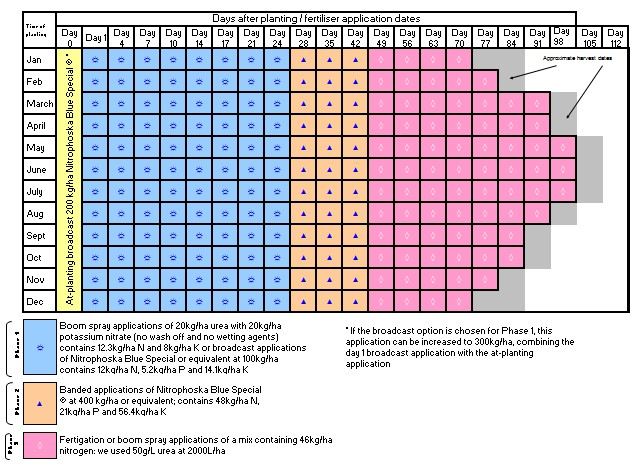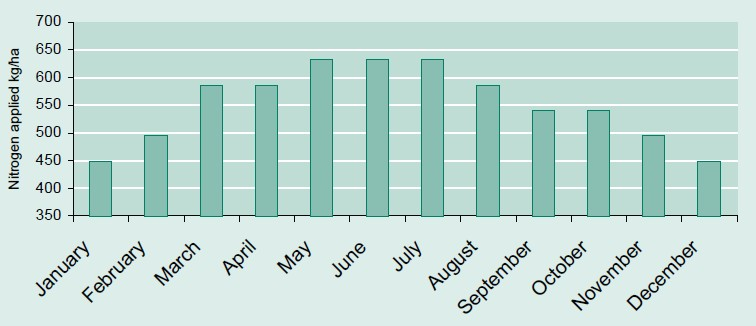3Phase fertiliser program
A ‘year-round’ fertiliser program for celery grown on the sandy soils of the Swan Coastal Plain is shown in Figure 4.

This program combines the methods outlined above with recommended rates and preferred products based on current research. Recommendations may change following more research.
Important notes
- Nitrophoska Blue Special® was used as the granular compound fertiliser. It proved the most effective fertiliser for broadcast and banding for efficacy and labour saving. This fertiliser contains 12% nitrogen, 5.2% phosphorus and 14.1% potassium. Other fertilisers with similar analysis may be suitable but need to be tested.
- Trace elements should also be considered in your fertiliser program. Maintaining soil pH with regular soil testing, liming as required and the use of supplementary magnesium should provide adequate calcium and magnesium. An annual broadcast application of complete trace elements is good practice for all crops grown in rotation, while a fertigated application of borax at 15kg/ha three and six weeks after planting is recommended as a precaution against boron deficiency.
- Broadcast or spray applications in Phase 1 can be applied once a week (at double rates) with little or no reduction in final yield when rates of irrigation are low or heavy rainfall is not expected. Twice-weekly applications are recommended when rainfall is expected or irrigation requirements are high.
- If fertiliser in Phase 3 is applied by boomspray, wash residue off foliage to prevent fertiliser burn, as higher rates of fertiliser are applied at this time compared to Phase 1.
- Urea is a suitable all year round source of nitrogen in Phase 3. Sulphate of ammonia has proved less effective than urea during cooler months.
Nitrogen application benchmarks
Figure 5 shows the levels of nitrogen that give maximum yield over the life of a celery crop grown on sandy soils of the coastal plain.
The totals are reported according to planting time.

If fertiliser application rates exceed those outlined in Figure 4 you are applying too much and losing unacceptable amounts to the environment. Future research is expected to lower these benchmarks even further.
Acknowledgement
Aileen Reid, Dennis Phillips and Helen Ramsey authored the original version of this material.
